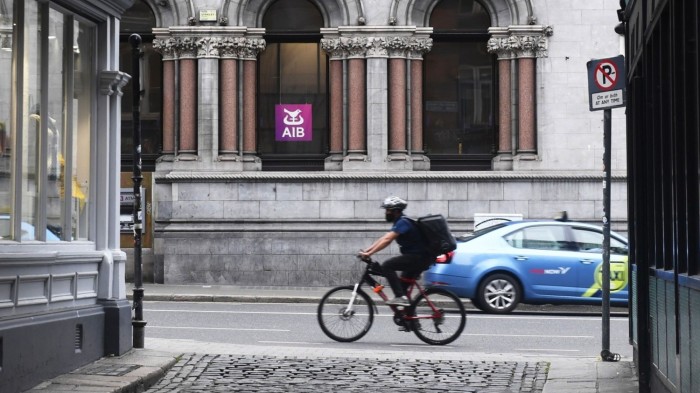Unlock the Editor’s Digest for free
Roula Khalaf, Editor of the FT, selects her favourite stories in this weekly newsletter.
There are few outright winners from a global trade war. But tariffs are a blunt instrument. Sometimes, large headline numbers don’t fully reflect a sector’s exposure — which can create opportunities for sharp-eyed investors. Irish banks are a case in point.
While Ireland was not singled out in President Donald Trump’s tariff announcements — and hence suffers a headline levy in line with the EU’s 20 per cent — it is heavily exposed to trade. Ministers fear further, more targeted measures against the pharmaceutical sector, the biggest contributor to Ireland’s large goods trade surplus with the US. US commerce secretary Howard Lutnick has previously called Ireland his favourite “tax scam”.
Irish bank stocks have hence been hard hit. As of Thursday morning, shares in AIB Group and Bank of Ireland, the Republic’s two largest lenders, were down 14 per cent and 12 per cent respectively from their early March highs. AIB’s fall is less severe after factoring in a recent ex-dividend date. Still, its performance is worse than the 7 per cent fall in the Eurozone-wide Euro Stoxx Banks index over a similar period.
It is not surprising that some investors took profits given strong gains over the past year and the risks of a trade war. However, even if the pharma clampdown was to materialise, there is a difference between the Irish economy and Irish banks’ loan books. Local banks lend mainly to consumers and smaller domestic businesses, not multinational pharma groups. Almost three-quarters of Bank of Ireland’s lending is in residential, commercial property or car finance.
There are still risks, of course. If those multinationals were to leave, causing a jump in unemployment or a collapse in government tax revenues, that could have a more severe impact on defaults and future growth. But it is worth remembering that, despite their impact on the US trade surplus, less than half of Ireland’s pharma exports actually go to the US, making it unlikely producers would want to up sticks entirely.
More importantly, a lot of risk has been factored in — by both investors and the banks themselves. Fourth-quarter earnings included some provisions for potential trade-induced loan losses. AIB’s worst-case scenario would have knocked a further 10 per cent from full-year earnings, according to KBW — unhelpful but, in the bank’s words, “hardly Armageddon”.
At a valuation of 7.8 times the next 12 months’ expected earnings, both AIB and Bank of Ireland are trading below the Euro Stoxx’s 8.7 times. And that’s despite above-average dividend yields and expected returns on equity in the mid-teens. Factoring in dividends and buybacks, total payout yields are well into double digits.
It could take some time for market volatility to calm down enough for a big bounceback in equity prices. In the meantime, however, a large dose of income like that could help settle nerves.




